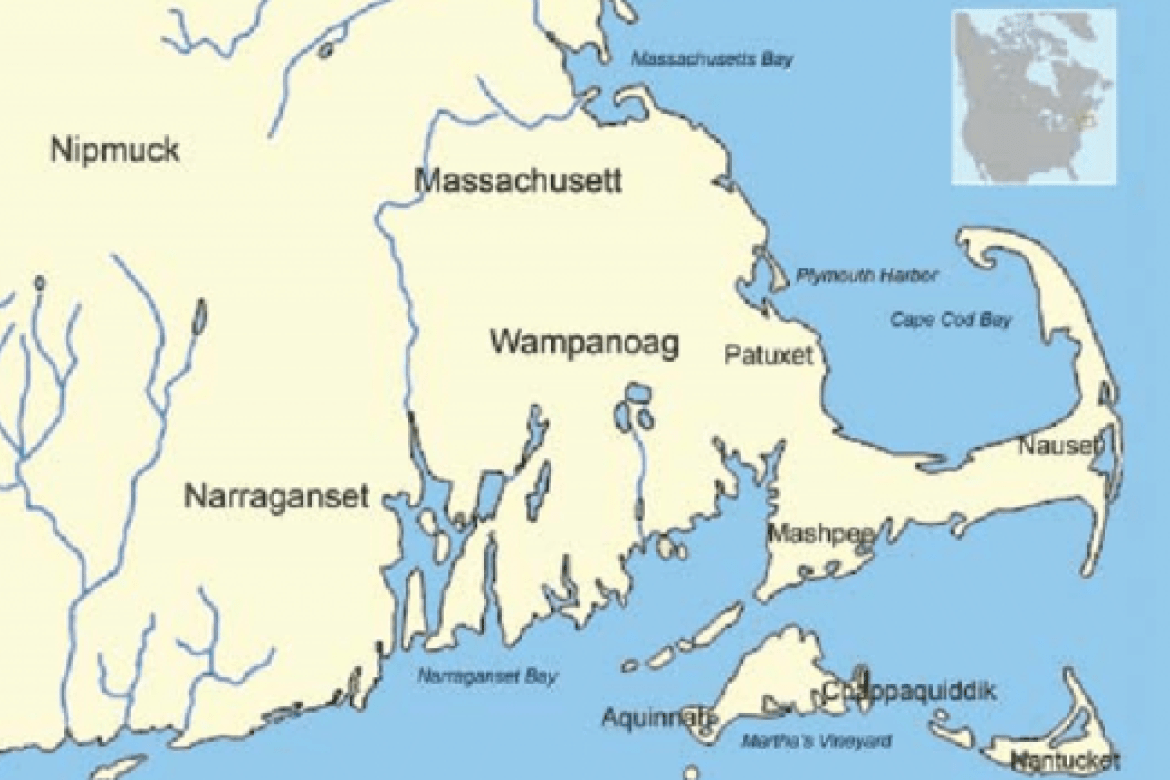Repatriation of Indigenous ancestral remains

Mount Holyoke College has repatriated ancestral remains the College had possessed for over a century to their home communities.
When Mount Holyoke College welcomed Larry Spotted Crow Mann of the Nipmuc community to help commemorate Indigenous Heritage Month last month, it was an opportunity for the College to also engage in deep reflection about a sensitive aspect of its history with Native American communities: the repatriation of ancestral remains the College had possessed for over a century to their home communities.
“Repatriation is one action step,” said Kijua Sanders-McMurtry, Mount Holyoke’s vice president for equity and inclusion, emphasizing it’s only the beginning of a longer process. “We have to acknowledge the harm that was taking place, we have to try to be in community with people who were harmed and try to repair that harm and we have to open the door to build trust and credibility in those communities — in this case, the Nipmuc and the Stockbridge-Munsee tribes.”
The harm that Sanders-McMurtry is referring to is the little-discussed history of the remains. Donated to the College’s biological sciences department in 1918 by a couple from nearby Holyoke, Massachusetts, presumably for teaching purposes, the remains were accompanied by a letter referring to the person — a woman — by a derogatory slur. It was indicative of both how normalized racism was and the reality of how it was considered common practice to dehumanize a body in such a way, said Sanders-McMurtry. The remains had apparently been excavated from their grave, although the exact history is unknown.
After Congress passed the Native American Graves Protection and Repatriation Act, or NAGPRA, in 1990, Mount Holyoke and other colleges, universities, museums and institutions that were in possession of remains and sacred items of cultural patrimony were awakened to the reality that these items needed to be returned. Under NAGPRA, federally recognized Native American communities can physically and legally reclaim burial remains and sacred objects.
But the process has been slow throughout the entire country, including at Mount Holyoke. It’s unclear what exactly was transpiring in the 1990s at the College regarding NAGPRA, but by at least the early 2000s, no one was using the ancestral remains for teaching purposes, according to Aaron Miller, the associate curator of visual and material culture and NAGPRA coordinator at the Mount Holyoke College Art Museum. Rather, the remains were tucked away in a storage closet.
Meanwhile, in 2003, faculty and administrators at Mount Holyoke, as well as Amherst and Smith Colleges, agreed to cooperate in the formation of a Five College Repatriation Committee, as Margaret Bruchac, coordinator of Native American & Indigenous Studies at the University of Pennsylvania, wrote in a 2010 article for the journal “Museum Anthropology.” The purpose of the committee was for the colleges of the Connecticut River Valley to support each other in their research and consultation toward satisfying the aims of NAGPRA.
But each college still had its specific experiences, and the lack of expertise and follow-through — especially because working within the parameters of NAGPRA is a complicated and time-consuming process, said Miller — meant there was little action on Mount Holyoke’s repatriation efforts for years. It was thanks to the spearheading of Christine DeLucia, then a professor of history at Mount Holyoke (DeLucia is now at Williams College), that a committee to focus on the repatriation of Mount Holyoke’s ancestral remains finally formed in 2014. After extensive communication and consultation with different Indigenous communities in the area, the College legally repatriated the remains to the Stockbridge-Munsee community of western Massachusetts in 2020, and they, in turn, physically repatriated the remains to the Hassanamisco Nipmuc Nation on Oct. 15, 2021.
As Sonya Atalay — an associate professor of anthropology at the University of Massachusetts Amherst and author of a forthcoming book on how Indigenous knowledge systems are challenging and changing universities — previously told Mount Holyoke College, such a process of returning ancestral and cultural remains is an opportunity for collaboration and relationship-building, even as it also acknowledges the trauma communities have faced.
“The approach should not be, ‘Well, collection of these remains and materials was in the past, it was a horrible mistake, we need to fix it. Here are the remains.’ Boom — mission accomplished,” Atalay said. “Rather, we need to think of repatriation as a process that informs our future policies and practices and teaches us how we can change relationships with institutions in the future.”
“NAGPRA is really human rights legislation for contemporary understanding,” added Julie Woods, repatriation coordinator at the University of Massachusetts Amherst. “It’s a way to return balance, a healing process.”
That reflection and healing were at the core of the memorial for the remains that preceded Larry Spotted Crow Mann’s lecture. Most Mount Holyoke students weren’t surprised to learn of this history, according to Sanders-McMurtry. They are part of a generation of students that wants institutions to acknowledge their role in uncomfortable histories and who are keen to see more actions by the College that privilege and center the voices of native Indigenous people.
As Mount Holyoke College also moves forward with its land acknowledgment policy to recognize the Indigenous nations that once occupied the land the College currently owns — a request first made by a group of students who referred to themselves as the Indigenous Student Association — it’s continuing to look into how it can better listen to Native communities about how they can honor their presence and nurture relationships.
“Part of that repair work looks like honoring the time and energy we’re asking people to invest in these spaces,” said Sanders-McMurtry. “It looks like establishing a relationship and rapport that is reciprocal and that is not focused only on the transaction … It is long term, it is intentional and it is incremental. Because it is so essential.”
